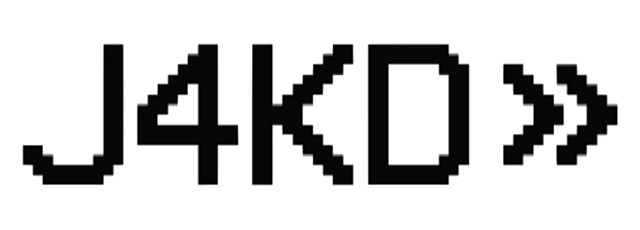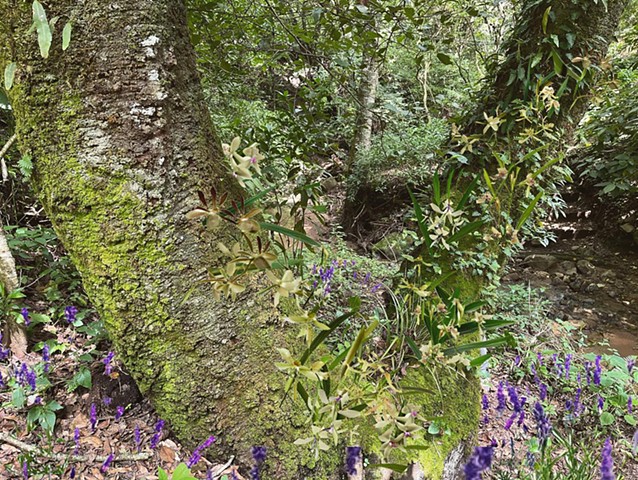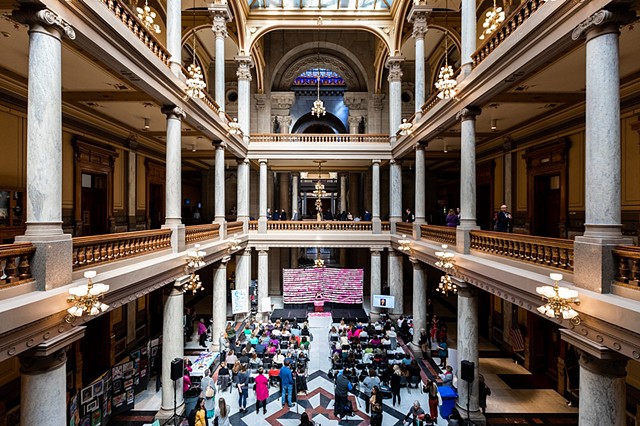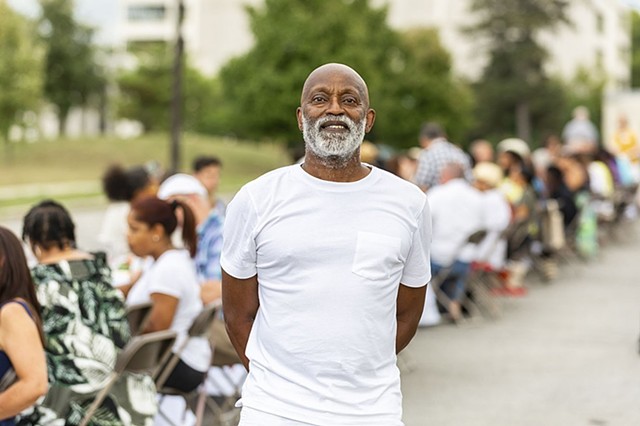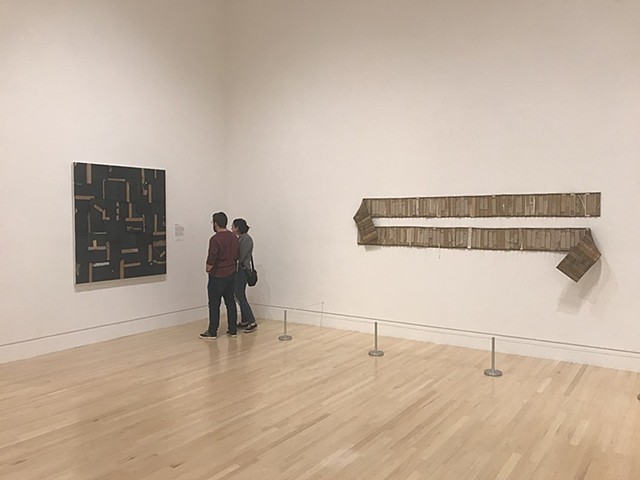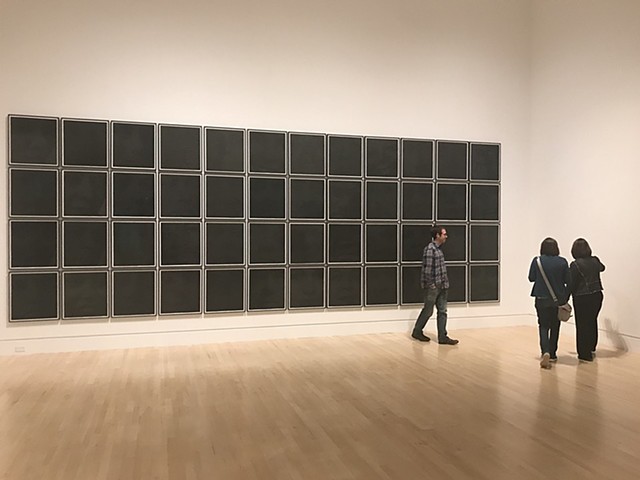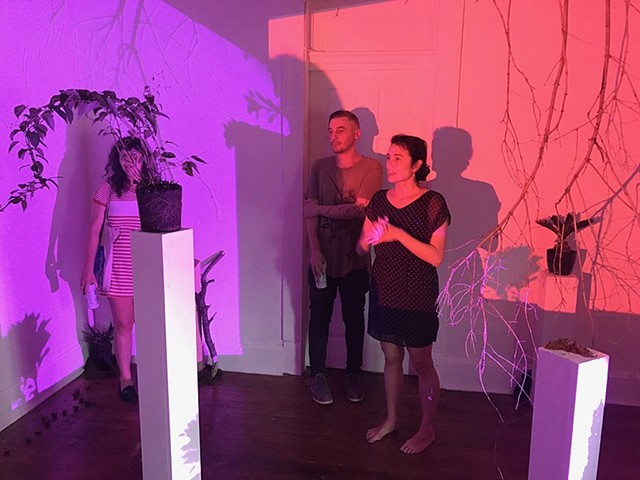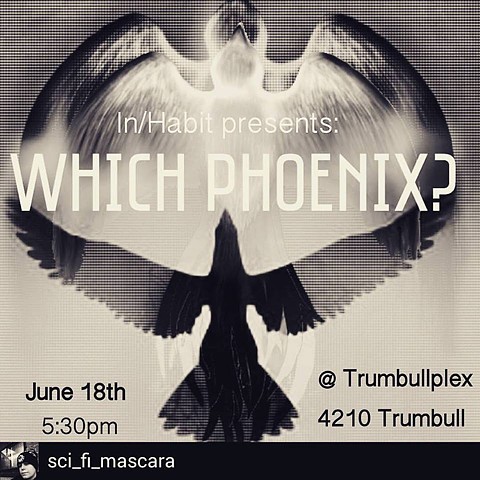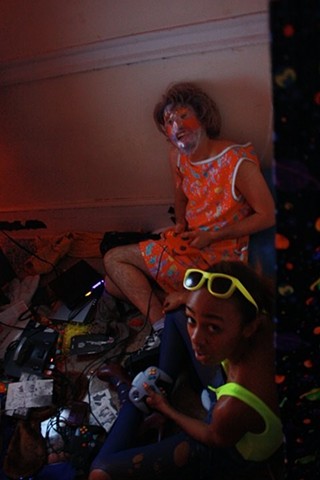Uncategorized, Artists Outside of Medium: Bryn Jackson
Interview by Nasreen Khan - 11/11/2023 - The Indianapolis Review
NK-Tell me a little about you as an artist. Where did you grow up? What is your family background? What about your personal story is relevant for your viewers to know when they look at your art?
I was born and raised on the south side of Indianapolis. My dad’s side of the family has been here for generations, and my mother moved to the U.S. from the Philippines in 1960. I grew up with a lot of exposure to the arts throughout my childhood. My dad’s mom had a passion for landscape painting, and her mother was a ceramicist. And my mom’s mom was a pianist.
My mom was convinced that if my time wasn’t occupied, I’d be getting into trouble, so she kept my schedule booked with visual arts, music, and martial arts. I sang with the Indianapolis Children’s Choir and developed a passion for travel. I painted and made clay sculptures with the IMA’s summer program. And I fought with other children twice a week and competed on weekends. And I carried my love of the arts into my adult life, eventually studying Film & Television Production at New York University and Art & Technology Studies at the School of the Art Institute of Chicago.
As an artist, I like to consider myself resourceful. At NYU, students competed for equipment and funding, and one year, my entire Experimental Film class was told that we would not be receiving our allotments due to some administrative error. Determined to make something of the semester, I decided to use the equipment I had available to me which, at the time, was a Motorola RAZR. Since then, the majority of my image making practice has been focused on portability and consumer-grade technologies.
Read the full interview at The Indianapolis Review
2022 DeHaan Artist of Distinction Award Exhibition
Indy Arts Council - 10/04/2023
Go on an art adventure to a remote Norwegian archipelago, examine dyed textile artwork exploring food and nutrition, and immerse yourself nature’s healing power in beautiful handmade books.
Art meets the natural world at this year’s DeHaan Artist of Distinction Award exhibition at Gallery 924, opening with a free First Friday reception from 6 to 9 p.m. October 6. We invite you to join us for drinks and to meet this year’s six featured artists.
In 2022, these Indiana-based contemporary artists received grants to take creative risks and test new mediums and technologies–and this show takes you on their journey. Other themes explored in the exhibit include memory and identity, trauma and transformation, and Black wellness.
Featured artists:
Boxx the Artist, painter and digital artist
Jacinda Russell, photographer and bookmaker
Jennifer Scheuer, printmaker and Ball State University associate art professor
Ian Weaver, multimedia artist and St. Mary’s College associate professor
Shamira Wilson, visual artist, farm apprentice and Wilson Art Lab founder
Ventiko, photographer, filmmaker and social practice artistPanelists:
Ondine Chavoya
Jade Powers
Bryn Jackson
Lindsey Lord
Melynne Klaus
Ernest Disney-BrittonThe DeHaan Artist of Distinction Award program, which supports contemporary artists with grants of up to $10,000, is a partnership between Indy Arts Council and the Christel DeHaan Family Foundation.
2023 Power Plant Grant Recipient
Awarded and announced by Big Car Collaborative - 9/19/2023
Photo courtesy of Big Car CollaborativeMade possible by The Andy Warhol Foundation for the Visual Arts based in New York, the program funds visual artists producing public-facing work that’s experimental and brings new energy to the city’s arts community.
This year’s awardees were selected by past Power Plant winner Andrea Jandernoa, Indiana-based artist Kelvin Burzon, and Cierra Rembert of SPACES in Cleveland, Ohio.
Markings of Remembrance is a collaboration that engages a form of Filipino storytelling through abstract patterns and symbols found in ancestral body art, or tatak (among many other names). By engaging stateside practitioners, ancestral objects, colonial-era manuscripts and contemporary texts, Bryn Jackson and April Knauber see their ultimate goal to be creating space for collective remembrance and understanding of an artform nearly lost to hundreds of years of religious and political subjugation of the indigenous peoples of the islands now known as the Philippines.
Prior to the creation of new sculptural and video works, the project will consist of the formation of a cohort of Filipinos interested in researching their lineage and sharing their findings and personal experiences, continuing a long tradition of cultivating collective memory through oral history, which will inform a tailored curriculum through which the group will learn about the archetypal symbols central to various Filipino tattoo traditions. Jackson and Knauber will research and share individual histories, the islands from which their families migrated, the languages spoken within their families, and the roles family members held within their communities.
Indiana House passes bill that defines consent
By Rhett Baxley - 03/02/2022 - Tristate Homepage
Photo by Samantha Veach, courtesy of NewfieldsINDIANAPOLIS (WEHT) – The Indiana House passed the Elements of Rape or HB 1079 by a vote of 90-1 on March 2. The bill is headed to Governor Holcomb’s desk for his signature.
The Indiana Senate unanimously passed the bill on March 1. The organization Women4Change has advocated for a legal definition of sexual consent for years.
Indiana law currently states that intercourse is only considered rape if it’s done by force, threat of force or if it occurs with someone who is mentally incapacitated or unaware that it’s happening. HB 1079 clarifies that someone commits rape if “the person disregarded the other person’s attempts to physically, verbally or by other visible conduct refuse the person’s acts.”
“Having a law that defines consent could mean that Indiana prosecutors will be more likely to take rape cases to court and more survivors will find the courage to seek justice,” said Chief Executive Officer of Women4Change Rima Shahid. “It’s definitely a step toward making Indiana a better place for women, which is our mission.”
The initial public push for the law came in September 2019 when Women4Change was working with hundreds of arts, cultural and victims’ rights advocates and social services groups. The organization kicked off the El Tendedero/The Clothesline initiative which highlighted the issue of sexual assault as a means to strengthening state laws around legal consent.
Women4Change and its partners held public events in a variety of venues in the 150 days after that launch and collected hundreds of notecards from Hoosier women who shared stories of sexual violence. The campaign culminated with the installation of 1,500 of those pink notecards hung on clotheslines in the Statehouse on March 5, 2020.
The Indiana Legislative Council assigned an interim study committee to consider a law to define sexual consent after being prompted by the installation and testimony of victims and their advocates. The Interim Study Committee on Corrections and Criminal Code met in October 2020 and decided not to recommend proposed legislation defining consent in the Indiana statute.
Women4Change continued to advocate for consent legislation during the 2021 and 2022 legislative sessions and made progress for Hoosier women each year.
Women4Change thanked the bill’s author Rep. Sharon Negele, R-Attica, as well as co-authors Rep. Sue Errington, D-Muncie, Rep. Donna Schaibley, R-Carmel, and Rep. Robin Shackleford, D-Indianapolis.
An Ethereal Night of Coming Together
By Taylor Lewandowski - 12/22/2021 - NUVO
It was cold, wet—luminescent on the streets. I walked to Hoy Polloy Gallery on tenth street, thinking about Dan Wakefield’s eyes, teaching, responsibilities gained and lost, construction in Indianapolis, all of which culminating in the feeling of an oddly specific, end-of-the-week exhaustion—where the evening covers you in a fog of bewilderment, excitement, and complete dismay at the unpredictable nature of what you see, think, act, become.
When I arrived at Hoy Polloy (3125 E. 10th St. Suite L), a band from Milwaukee, Rat Bath, was playing in the small room that faces tenth street, where a group watched the lead singer decked in a Santa Claus outfit strum their guitar and yell out profanations. This was the first band in the Abattoir Midwest’s "Babehouse Indy Holiday Gala," which was a “celebration dedicated towards BIPOC and LGBTQIA artists in the Indy and the Midwest” area (via Abattoir Midwest’s Instagram). In the back gallery, there were works from Gnat Bowden, who would later play a Kleaner set; Justin Brown, the proprietor of Hoy Polloy, whose collage work of Indianapolis buildings, and the notable depiction of Democrats kneeling with Ghana’s Kente scarves around their necks, continue to magnify specific, systemic problems around race; Duncan Kissinger, with his collection of the PAW patrol paintings; Ozzy Graham, with a painting of odd, almost Iconography-like scenes in symbolic, disparate places against a minimal backdrop; Nick May, with portraits of Astro in apartment settings; and Allison Scout Waite, whose portrait of a nude woman smoking in shades of purple and green, evokes “the tenuous state of existence for femme people—simultaneously expected of and denied in the same breath. Through these paintings, I attempt to visually articulate this complex experience and ways I understand power and reclamation of self under these circumstances.”
The show brought together numerous artists, musicians, and DJs (5laphouse and DJ Applejuice would later play, along with others) and created an open space for exploration, expression, celebration—a hopeful opening in a city whose conditions could be described as deleterious, confrontational.
On Mass Ave. at The Jungclaus Mill (825 Massachusetts Ave.), StorageSpace Art Gallery and COMPANION put together a two-day show entitled, “Stove Party,” with various Indiana artists showcasing their fabricated stoves and fire pits with additional video and neon installations inside. Against the drizzly cold weather, the screens of fire burning, the smell of wood, and the stoves themselves created an evocative space of contemplation and pragmatic warmth. All of the artists who participated in the exhibit received a two hundred dollar honorarium. The mental fog began to recede as I stared at this neon piece, Rolling Stone: Musicians on Musicians, by Tillman Reyes and Bryn Jackson’s Archipelagic Seed and thought about my childhood in Fillmore, Indiana; an acid trip in Las Vegas; and the claustrophobic feeling of wearing a mask in a grocery store. An ambient DJ played music in the corner, pushing me further into self-introspection until I started talking to a mailman still in his uniform drinking a beer. He had recently moved back to Indianapolis from Massachusetts. He dreamed of moving to Pensacola, sitting on the beach, hanging out near the military base, and delivering mail. I often wonder if there is a spirituality in looking at art. The mailman professed bewilderment when it comes to art, even when I told him, “All you do is look and feel. That’s it.” No need to posture. You can only be yourself. All you can do is absorb, respond, and hope to delve closer to a refined honesty, opening wide a space you thought was no longer there.
North side community gathers for community meal to address food insecurity barriers
By Nicole Griffin - 09/29/2019 - RTV6
INDIANAPOLIS — On Saturday evening, 300 people gathered at Newfields in Indianapolis for a community meal to help better understand issues, like food insecurity, facing others.
Those who attended the meal came together with the goal of provoking a change and leading to a stronger and better community.
The meal was the first event for a social practice project called "At the crossroads - a community meal," led by St. Paul, Minnesota based artist Seitu Jones.
"This is the first of a many meals to have this over the table conversation about race, class, gender," Seitu Jones said. "Specifically about housing and all the many injustices that helped lead toward food injustice."
People from neighborhoods like Meridian Kessler, Mapleton Fall Creek and Butler Tarkington sat at a 400 foot long table for the meal.
"The table that we are sitting at we were actually able to talk about food deserts," Stephanie Roberston said. "Where people shop and how we can actually work on things together to help with the communities find a better access to food into healthcare."
The table had a hand quilt covered with red lines. Those lines served as a talking point.
"One of the things we are talking about it's red lining that old practice of insurance companies and banks where they will draw a red line around a community of color and African-American or poor white communities and deny services to those communities," Jones said. "It's because of that practice that many of these injustices like food injustice manifest it self today."
The meal provided an opportunity for people to learn about the barriers each other face, continue the conversation and provoke a change.
New project at Newfields takes aim at food insecurity
By Mike Orr - 09/28/2019 - WTHR
INDIANAPOLIS (WTHR) - Newfields is starting a new project to raise awareness about food insecurity.
On Saturday, 300 people from across the city gathered around a 400-foot table for a community meal.
They talked about how to correct racial bias in housing, which they believe is part of the problem with access to fresh food.
"We really have to go farther back to see why were in this situation where people don't have access to quality food, and a lot of that is historical ways we built our cities, using issues such as redlining African America and other communities were not allowed to get mortgages or other funding to support their neighborhood, and we live with ramifications of that," said LaShawnda Crowe, community-based artist.
A local chef known as the "food architect" prepared a three course meal.
To learn more about this issue, there is a panel discussion on Thursday as part of Newfields' harvest festival.
A ‘LIVING ARTWORK’ WILL SHUT DOWN 39TH STREET ON SATURDAY. THE ARTIST’S GOAL? FOOD EQUITY.
By Amanda Kingsbury - 09/26/2019 - Newfields
In 2014, artist Seitu Jones wanted to start a conversation with his neighbors in St. Paul, Minnesota, about food traditions, food access, and food justice. So he threw a dinner party of sorts. On a warm September afternoon, 2,000 people sat down to eat locally produced food at a half-mile-long table in the middle of Victoria Street in the Frogtown neighborhood, named back in the 1860s for its marshes and swamps.
“There are still a couple folks, that when I see them, they say, ‘Oh, you’re the guy who closed the street!” Jones said. “I never thought that would be a thing, but closing the street became a demonstration that people have the power, and ability, to even make a change like that.”
This Saturday in Indianapolis, 300 invited guests will join their neighbors at a table in the middle of 39th Street, between Meridian and Illinois, for a community meal hosted by Jones, in partnership with Newfields. Indianapolis artist LaShawnda Crowe Storm created the 421-foot quilted table runner, redLINES. It will also serve as the touchpoint for open conversations about food justice issues and “redlining,” a historical practice that denied services, such as real estate investments and loans, to certain populations.
Based on different factors, local neighborhoods would earn yellow, blue, green, or red designations on a map, and “the blacker, browner, or poorer the community, the redder the map,” Crowe Storm said. The 38th Street corridor was one such area.
“redLINES asks us to consider the historical harm,” Crowe Storm wrote in her artist’s statement. “What makes us angry or ‘see red’ about these histories, about these realities? How do we redraw the map for a more equitable and racially just future?”
The goal of Crossroads: A Community Meal is to show how local creatives, growers, neighborhoods, and institutions can work together to create food equity. About one-third of Indianapolis residents live in food deserts, areas that lack healthy food providers such as grocery stores and farmers’ markets. Without easy access to fresh, nutritious food, people are more susceptible to chronic, debilitating diseases such as Type 2 diabetes and hypertension.
In St. Paul, Jones had teamed up with Public Art Saint Paul – along with farmers, artists, chefs, residents, and volunteers - to launch CREATE: A Community Meal. Before that, though, he spent two years on a “listening tour,” organizing discussions and knocking on people’s doors.
He studied urban food systems. Jones, who has a graduate degree in environmental history from the University of Minnesota, has also spent 18 months as a senior fellow in agricultural systems in the College of Food, Agriculture and Natural Science Resources at the University of Minnesota.
In the fall of 2017, Bryn Jackson, assistant curator of audience engagement and performance at Newfields, met Jones while volunteering at the HeARTside Community Dinner during ArtPrize, the international art competition and festival in Grand Rapids, Michigan. Jones’ project, a public art installation designed to spark conversation about food access, won the $200,000 juried grand prize.
Jackson wanted to bring the concept to Indianapolis. But usually when a museum commissions an artist to do a piece of work, an object or performance results. Crossroads is a “living work of art,” a socially and politically engaged piece that wouldn’t be complete without robust community participation and planning, Jackson said. But it’s also a multi-year project with a goal of empowering and providing a platform for Central Indiana residents, improving their access to fresh, affordable food, and creating equitable food policies.
“To look at what communities are facing, and not say we are coming to fix the problem – but that we want to listen, to help, to be an ally, is exciting,” said Tariq Robinson, manager of Outreach and Community Programs at Newfields. “And not just exciting – it’s the right thing to do.”
Jones has visited Indianapolis four times to get a sense of the city, meet community residents and learn about their experiences. Most recently, he traveled with a folded bike, and then rode along the Monon and White River trails to explore local neighborhoods.
“Part of it is about really listening, deep listening,” Jones said. “And being open to being challenged, to being critiqued, and really being in sincere conversation with someone.”
In St. Paul, Jones, who is a master gardener, was one of the guiding forces behind the five-acre organic Frogtown Park and Farm. He introduced his neighbors to area growers and chefs to help dispel the myths and distrust they had about food production.
Over his nearly five-decade career, Jones has created about 30 large-scale public installations, and his work often brings together art, water, the environment, and agriculture. All were interests he had as a child, when an aunt nicknamed him “little George Washington Carver” because of his intense curiosity about plants. Jones, who was born in St. Paul in 1951, grew up helping his grandmother in her garden, and spent a lot of time in fishing boats with his father, grandfather, and uncles.
But he also remembers the shift in the 1960s and ‘70s toward processed foods, and eating TV dinners on “special occasions” and drinking Tang.
“My mother and grandmother and my aunts, they used to make fresh-squeezed orange juice and I put that down for Tang?” Jones said, laughing.
“Now there’s this desire to think about the food that our grandparents made and ate, and the fact that all of us have these dishes that were shaped by our family and culture and the land - and how adamant we were to ignore and throw all of that way,” he said. “But only to find out that it’s been killing us.”
At Saturday’s dinner on 39th Street, the 300 guests will sit down to a simple, nutritious and freshly made meal: bread from Amelia’s Bakery, a salad with locally grown garden vegetables by Indianapolis Chef Corey McDaniel, a sweet corn soup made by Joshua Ratliff, director of Culinary Arts at Newfields, and key lime pie from Second Helpings. Local poet Januarie York has written the grace, which will be read by her student, Dajanae Harges, and poet Synergy has written and will deliver the benediction.
And while the first Crossroads is underway, Jackson is already thinking ahead to Year 2, when he hopes to involve even more neighborhoods and inspire other institutions to work with local communities to bring about real social change.
“I’m hoping this can be a roadmap, or even just an example of how this can be done,” Jackson said. “There are so many ways to successfully rebuild relationship with communities that have been left behind by institutions, and they all begin with listening.”
Limited seats are still available for Crossroads: A Community Meal for residents of the Mapleton-Fall Creek, Meridian-Kessler, Crown Hill, Butler-Tarkington and Riverside neighborhoods. To RSVP, please e-mail Bryn Jackson at bjackson@DiscoverNewfields.org.
Museums, Murals, Musicians and More
Jill Ditmire - 10/18/2019 - WFYI
The Museum of Psychphonics; Rabble Coffee; Ukelele School; Healthcare theater; Samuel Levi Jones; Positive Poetry; Mediterranean Food; The Maplewood Derby; World Class Murals; Prairie Chicken Chalk Art Festival. Originally posted September 5, 2019.
Click through to listen to the program.
Artist Samuel Levi Jones makes his major solo show debut
03/17/19 - artdaily
INDIANAPOLIS, IND.- Indianapolis and Chicago-based artist, Samuel Levi Jones is making his major museum debut at the Indianapolis Museum of Art with Samuel Levi Jones: Left of Center, open from Mar. 15 through Sept. 1, 2019.
In this thought provoking exhibition Jones provides visual commentary on the oppressive nature of American power structures, particularly those that substantiate our education system, the criminal justice system and healthcare system, as well as the American historical narrative. Jones does this by deconstructing materials such as encyclopedias, law textbooks, medical textbooks and football equipment and making them into abstract paintings and sculptures.
His work is inspired by questions of authority, representation and recorded history. Jones rearranges the deconstructed books into grid-like compositions that are meant to expose their flaws and question their truth. Jones explains that he is “ultimately thinking about information that is selectively left out.”
“This is a very important time for Newfields to present this show, as art institutions across the nation are finally taking an honest look at how traditional museum practices have been historically discriminatory. It is imperative that Jones’ exhibition takes place right here and right now, as Newfields is a prominent museum rapidly transforming its culture from the inside out,” said curators Dr. Kelli Morgan and Bryn Jackson. “As curators of color who are also scholars of critical race theory and performance, we’re very excited about the exhibition because Jones quite literally peels back the layers of institutional racism in our society. With purposeful examination, his beautiful patch-worked canvases completely restructure the tomes that uphold race-based oppression. His ability to deconstruct and transform the antiquated into new visual and textual paradigms reframes the relationships between freedom and oppression, power and vulnerability, as well as equality and exclusion.”
Left of Center strives to communicate that Newfields continues to be a museum actively engaging with its local art communities and continues to host important conversations. As guests spend time in the gallery they will be confronted with Jones’ process and perspective through a constellation of references to popular culture, current events and personal experiences. Each work reveals a conceptual richness to those who are willing to follow in Jones’ footsteps, revealing the many layers of meaning that are embedded within the materials.
Jones was born in Marion, Indiana and now lives and works between Chicago, Illinois, and Indianapolis. His work is also currently on view in Solidary & Solitary: The Joyner/Giuffrida Collection, Smart Museum of Art, Illinois; We the People, Albright Knox Art Gallery, New York; Infinite Blue, Brooklyn Museum, New York and Personal to Political, Northeastern University, Massachusetts. Forthcoming solo exhibitions include Let us Grow at Galerie Lelong & Co., Paris in May 2019, Susanne Vielmetter Los Angeles Projects in June 2019, and Galerie Lelong & Co., New York in September 2019. Jones’ most notable exhibitions include After Fred Wilson at the Indianapolis Museum of Contemporary Art, Indiana; and Unbound at the Studio Museum in Harlem, New York. His work can be found in museum and public collections such as the Chazen Museum of Art, University of Wisconsin – Madison, Wisconsin; San Francisco Museum of Modern Art, California; Rubell Family Collection, Florida; Los Angeles County Museum of Art, California; Studio Museum in Harlem, New York; and the Whitney Museum of American Art, New York. In 2014, Jones was the recipient of the Joyce Alexander Wein Artist Prize, an annual award whose past recipients include prominent artists such as Leslie Hewitt, Glenn Ligon and Lorna Simpson.
A Moment of Change and Reckoning at Newfields
By Dan Grossman - 03/17/2019 - NUVO
Standing in front of more than a hundred patrons March 15 at Newfields, associate curator of American art Kelli Morgan described that night’s opening of Samuel Levi Jones’ Left of Center as “a moment of change.”
Jones, who was born and raised in Marion, uses old book covers among other mediums to create artwork. In said work, he questions the power structures — and assumptions — that many Americans have taken, and continue to take, for granted.
A striking example of this is his “48 Portraits (Underexposed),” which is the first thing you see when you walk into this first major survey of the artist’s work.
The 48 portraits in Jones’ series, taking up an nearly entire gallery wall, are all African American icons of the last two centuries. But it will take your eyes a moment or two to discern the “underexposed” portraiture.
This work references Gerhard Richter’s "48 Portraits", displayed at the 1972 Venice Biennale, which depicted 48 icons of 19th and 20th century Western culture who are all white.
The media of the work matters: the images of African Americans were inkjet-printed on paper made from recycled 1972 Encyclopedia Britannicas. The resulting work, like many others in this survey, addresses both race and erasure, and just might make you question why Richter chose all white males for his series.
Also displayed here is the first work in which Jones used law books, on canvas, as a medium. Titled “Talk to Me”, this work also takes up nearly a whole gallery wall, addressing the enduring problem of police brutality with its monument-sized scale. A similar work was displayed at the Indianapolis Museum of Contemporary Art (iMOCA) in 2015.
Jones’ choice of mediums is often provocative: this is certainly the case with two nearly identical works displayed side by side, titled “Black Artist” and “Black Athlete”. These works use as their medium deconstructed footballs spread with asphalt on canvas.
The wall text notes that Jones played football at Taylor University, in Upland, where he received a bachelors in communication studies. The text also references Jones' professed solidarity with Colin Kaepernick, who took “a knee” as a San Francisco 49ers quarterback to protest police brutality and, as a result, no longer plays with the NFL.
Jones also received a B.A. from Herron School of Art & Design in 2009 and an M.F.A. in studio art from Mills College in 2012.
It is possible to read satire in some of his titles.
“Blue Skies Matter,” composed of blue law books, is a commentary aimed at criticism of the Black Lives Matter Movement — and how strategic use of the phrase “All Lives Matter” works to obscure the problem of police brutality aimed at African Americans.
The monumental scale of much of the work, together with the context-giving wall text, will likely spark many conversations.
Kelli Morgan, as she talked at the podium set outside the exhibition entrance on opening night, said that the conversation should expand outward outside the museum walls, involving curators, interpretive staff, and museum patrons.
“This is your show,” Morgan said. “So we need you to participate, don’t just come to the opening … If you engage Sam’s work, you know the context. We are talking about the history of white supremacy, the history of white privilege, the history of gender privilege, the history of police brutality; medical experimentation, the way that those systems still affect sports entertainment, arts entertainment … It’s not easy subject matter to discuss, but he has found a way to make it beautiful and to share his vision with us and that’s really important.”
Morgan made it clear that, with the opening of this exhibition, a new chapter was opening in the history of Newfields.
“I don’t have to go through the history of race and class in this city and what that has meant for various communities, the way the museum has participated in those narratives, be it positive or negative, unconsciously or consciously,” she said. “But here’s a moment where we’re celebrating one of our hometown sons, as a moment of change.”
Morgan also made a reference to the new name of the museum campus, Newfields, the result of the Indianapolis Museum of Art rebranding itself in 2017.
“In this new field, that is your field, we need you to have these conversations in your homes, in your churches, in your schools, right?” she asked. “In your communities. We are no longer the gatekeeping institution that just kind of rests between the north side and the south side.”
As if to underscore the significance of this "moment of change," the presenting sponsor of the exhibition is the Central Indiana Community Foundation.
When CICF president and CEO Brian Payne came to the podium, he talked about the CIFC's learning curve.
“We certainly acknowledge as we’ve been on our own learning journey that we for the past 102 years,” he said. “We have been a well-meaning but we have been an old power institution; and we have been a white power institution, and we have dedicated ourselves to be an all power institution.”
Jones had a request for viewers of his work when it was his time to speak.
“Stop and observe and question everything,” he said. “And that’s one thing I try to ask, to get my children to do is to question everything and so maybe you’ve been in the situation before … things have gone on in a traditional way; they seem right and they seem okay but stop and ask even if it does seem right.”
And that is precisely what he is doing in his own work.
“I work with encyclopedias,” he said. “I work with law books and I work with medical books and there’s a new piece in here where I’ve made for the very first time where I’ve used art books. So I’ve questioned the system of the art world and how it works ...”
He then described a recent conversation he had with a friend.
“While we’re talking he says aren’t you worried about what you say and what might happen? And I don’t see it any other way,” he said. “I’m happy that the work has come to that, coming to a point where people are responding to it.”
Roll Call Exhibit at The Oilwick Studio
By Lori Bowes - 07/20/2018 - PATTERN
Roll Call is a three part exhibition series of new media works created by interdisciplinary artists in the Midwest and curated by Bryn Jackson and Jenn Cooper. For three weeks in July, Roll Call will promote three different unique spaces with different artists at each exhibit. For the third and final exhibit coming up this Saturday the 21st, Roll Call 3 will showcase a unique sonic, visual, and movement-oriented showing. Read on to hear from the two curators as well as board member, Katie Norman, of their take on Roll Call 3.
What can people expect from this weekend’s show?
Co-Curator Bryn Jackson: This Saturday is the finale of the three part Roll Call exhibition series. For this weekend’s edition, guests can expect a sonic frequency and movement workshop by JCSpaceRadio, a video by Keeley Haftner, performances by Amelia Charter and Mitsu Salmon, and conceptual catering by Nathan Braunfeld.
Co-Curator Jenn Cooper: This weekend’s Roll Call will feature performance and timed based works pared with conceptual catering. These works will be unique engagements with new media content. Additionally, an artist panel will conclude the evening’s events.
Is there a collective concept for the three shows being put on by Roll Call?
Co-Curator Bryn Jackson: This series has been entirely organized around the theme of Presence. When Jenn and I were initially thinking about Roll Call, we were both working with ideas of what it means to be here in this moment and how that’s affected by technological advancement and the development of systems so massive, it’s difficult to perceive them because of sheer scale. We found that many of the artists we wanted to work with were also grappling with themes like family, personal and collective memory, identity, economy, and the environment. All of these concepts ultimately complicated and contributed to the overarching theme, which has made the series really rewarding to those who are willing to dive in and ask questions.
Co-Curator Jenn Cooper: We began the series with the inquiry, “what does it mean to be present?” We were interested in exploring the relationship technology is playing in our lives and practice, which has manifest in sculpture, video, performance, virtual reality, and robotics.
There seems to be a quite a bit of local galleries doing weekly shows. How is this different/better than say keeping them open for a month?
Co-Curator Jenn Cooper: Ideal for our series, the three iterations of Roll Call allowed for each gallery to exhibit a tightly curated set of works unique and in conversation with each space. This has presented a dynamic set of environments in which artists and audience can engage with the concept of presence. The weekly roll out of Roll Call exhibitions has allowed for each involved work time and space for its presence within the conversation.
What makes the Oilwick showing unique?
Oilwick Board Member Katie Norman: The Oilwick is an open and raw space with a large gallery and lots of character. With performance work I think that you will see artists begin to react to that. The other Roll Call shows were mostly exhibition format where anyone can walk in and out of the space. This show will be a lot less about what is going on on the walls and much more about presenting the audience with an experience that will progress and transform throughout the night.
December, 2018: Collective Terrain
Super excited to have been included in the inaugural issue of Collective Terrain! It’s an honor to share a virtual space with so many talented artists who also grapple with the complex relationship we have with our environments.
June, 2016: WHICH PHOENIX? presented by In/Habit at Trumbullplex in Detroit
Ayo fam! I'm super excited to have been included in this show presented by In/Habit at Trumbullplex in Detroit! If you're in the D, show out, and let's get into some trouble!
WHICH PHOENIX? is about resilience.
"Who survives/against what? Resilience against capitalism vs. resilience of capitalism: 'when the phoenix is the corporation', politics of trauma: what does it mean to survive?, 'screaming females'/who can be angry?, being angry while black, ground/ashes, seeking asylum, shelter, horizontality vs. hierarchic structures, hospitality, affirmations of joy, alchemy, destruction, transformation & survivalism, surviving sexual assault, artists & capitalism/gentrification, exclusivity & distinction (what criteria?), the rupture that makes surviving visible."
Playing Hard: Urban Art Games of Summer 2010.
By Angela Ferraiolo - 02/06/2010 - Furtherfield
Not long ago, urban games were a kind of novelty. Some grew out of the street performance tradition of live theater. Some came from gamers who were involved in tabletop RPG and wanted to experiment with live reenactment. Others were produced by media artists as a way of experimenting with new technologies like GPS and text messaging. But along with these approaches to play, and at times learning from their carefree attitude towards entertainment, there grew another tradition of the urban game, a tradition of using the city focusing on exploration, and as a specific kind of critique. At its worst, the artist produced street game replicates of hollow self-promotion, through corporate, sponsored seasonal festivals. But just as experimental art can involve an analysis of mainstream art, the urban game can embody a palatable critique of the routines of city systems, including the deadening routines of metropolitan life and some of the large scale mechanisms of corporate capitalism.
These kinds of games echo the spirit of the Situationist International, which called on artists to create alternate experiences through the construction of situations, psychogeography, and the use of play as a form of critical thinking. Urban games can also remind us of Hakim Bey and his idea of a Temporary Autonomous Zone by using goals, rules, and play with the creation of the 'magic circle', a world inside a world, as a method of directing public imagination towards an alternative presence, a way of acting and existing as an independent community within a larger, more repressive reality, even if only momentarily. Urban games also continue the Fluxus idea of the 'happening', a participatory media form in which audiences support artists, moving beyond the role of observers of performance to become collaborators in events. With the urban games season about to begin, this review takes a look at how several groups, either consciously or at times not so consciously, have interpreted these traditions for summer 2010.
In New York, the much loved Come Out and Play Festival will run from June 4th through June 6th, with events scattered throughout the city borough of Brooklyn. Games include playground mods, GPS exploits, extreme sports, narrative quests, and massively multiplayer scavenger hunts. The festival hosts about forty game designers from around the world and about two thousand people will attend. Executive producer Greg Trefry says COaP strives to be entertaining and is not so much concerned with philosophy as it is with place: "Where the festival is located each year is actually really important to us. We look for interesting parts of the city to experiment on and use as the stage for the festival. So we've played everywhere from big anonymous urban areas like Times Square to now more family oriented locales like Park Slope."
Still, the designers of COaP seem to have a way of engulfing serious issues with comedy and encouraging people reclaim neglected parts of the city by giving them a second look. Along these lines, Atmosphere Industries of Toronto will present Gentrification, a game that picks up on Brooklyn's ongoing housing conflicts by asking players to assume the roles of real estate developers or neighborhood locals while collecting properties and gentrifying neighborhoods. Meanwhile, Gnarwhal Studios of Baltimore will sponsor 'Humans vs. Zombies', a modification of the playground game tag that introduces large groups of strangers to one another by sending players out into the city as the walking dead.. It's hard to sit in a park, completely shut off from everyone around you, during a two hundred person simulation of a zombie attack. Also part of COaP, New York's Crux Club will confront community fears of toxic contamination through their game 'It Lurks in Gowanus', a hide-and-seek mod that asks participants to track down a creature who has ominously escaped from legendary pollution of the neighborhood's Gowanus Canal.
Although he agrees that all urban game events take some kind of cue from historical antecedents like the Situationist International or Fluxus, producer Trefry resists making a formal connection between these movements and COaP. Instead, he says, the main concern was and continues to be community building, getting people together in a surprising way and in an unexpected space: "At its heart, the festival is about running around outside and having fun with your friends. It sounds silly, but that's such an amazing thing to experience." This goal of community building has caused COaP to inspire other urban games festivals, including the Hide & Seek Festival in London and the igFest in Bristol, and the Steel City Games Fest in Pittsburgh. The organized versus the random, or the juxtaposition of the carefully designed structure of a game with the largely unstructured, seemingly arbitrary activity of ordinary public space continues to be a common interest among COaP design groups, which are likely to include engineers, academics, and urban planners alongside artists and actors.
In San Francisco, the artists of SFZero cite Situationism and Fluxus as fundamental to their practice. The SFZero collective was founded by Ian Kizu-Blair, Sam Lavigne, and Sean Mahan in January 2006. Initially, the group used something like a Fluxus process of writing instructions for happening-like events that teams of other players acted out. Soon, these collaborations became the basis for both an online community and real world urban games network that now include over five thousand players. Through the SFZero website, participants initiate events by challenging other participants to 'Eat a food that frightens you', or 'Go to a street corner of your choosing and wait for something fantastic to happen.' SFZero seems to agree with classic Situationist objectives. A good game shifts awareness, Kizu-Blair says, changing the city for the people who play: 'Oftentimes the players report that they have a completely different experience of the urban environment as a result of playing and go to places in their city where they have never been before. There is a cinematic quality whereby players live out experiences that normally exist only in spy movies - chases down dark alleys, chance meetings, etc.' Typical SFZero tasks range from exploring overlooked locations in the city to taking a chance on meeting new people.
As fantastic as some of these instructions sound, and as important as the Internet is to SFZero's success, Kizu-Blair says it is essential that some productions have a real world component: 'As people become disenchanted with eight plus hours per day of screen time, they are increasingly gravitating towards hybrid activities that bridge the space between the virtual imaginary and the physical real world. These activities blend the safety and simple pleasure of screens with the risk, tension and excitement of physical interaction. More and more, members of our society will seek to escape from escapism towards an ethics of action, to escape from movies to real experiences. They will find that they have little idea how to have real experiences after their time in the imaginary. SFZero is the transition. 'SFZero offers both real-world excitement and eternal return to the screen, to re-live, re-experience and re-imagine your engagement with reality.'
Recently, Kizu-Blair, Lavigne, and Mahan have begun staging riskier, more elaborate game events like 'Journey To the End Of Night', in which runners try to make it through six checkpoints on foot or by public transportation, while avoiding capture by chasers. An early version of Journey actually opened the 2006 season of Come Out and Play. This July, the veteran SFZero player Lincoln will stage a further production of Journey in Los Angeles.
This summer, SFZero will present The Wanderers Union, a game that is loosely based on a French style of self-supported long-distance cycling called randonneuring. To perform Wanderers Union, players get a set amount of time to travel on foot and by public transportation through a series of zones. The idea is to create a single holistic experience of a urban area. The journey intends to juxtapose city spaces in ways that reveal meanings that might otherwise remain unobserved. Players who complete all of the events will progress from an initial four hour wandering to a final twenty-four hour wandering. By using play as a means of gaining understanding, participants will hopefully gain a small degree of mastery over urban space. Kizu-Blair says: 'It's like a video game - you level up and gain powers - but you have the added satisfaction of doing something real, and you can include anyone in the experience.'
Back on the East coast, the New York based artist's collective Opt-In found that what started as a thesis project for an experimental film class unexpectedly became a series of multimedia events that now includes filmmakers, fine artists, dancers, performers, and musicians. Titled 'ZeroDay Exploits', these evenings are the work of Bryn Jackson, Sarah Lerner, and Nathaniel Barker, who says the group has adapted the Fluxus concept of "happening" to the 21st century: 'We create immersive environments in which strangers and friends can form new communities around a project, an idea, or a simple good time. We bring people from all walks of life together by promoting open dialogue and the creative expression of public discourse through a vast array of mediums and the use of public space.'
Past themes for the Opt-In exploits have included faith and technology. This July, the group plans to explore the idea of "home" by inviting guest artists and guests to contribute items and materials that evoke a sensation of home. The goal of this event is to create a sense of rootedness in New York, a city of perpetual resettlement. Another major goal for Opt-In is the deconstruction of the digital experience through live performance. According to Barker: 'Our focus has always been on participation, so our events offer multiple means for encouraging visitors to get their hands dirty including music, secret actors to stimulate conversation, inclusive performances, and free art materials for spontaneous art creation.'
Also related to Fluxus, but in a gesture that seems more directed towards the Brazilian director Augusto Boal, a group calling themselves Invisible Playground Berlin, uses the urban game as a kind of political visualization. Founded by the artist known as Sebastian Quack Sebastian, this group's interests lie at the intersection of theater and digital gaming. In 'F Be I, See I A', Invisible Playground re-enacted peer-to-peer communication as a giant game of urban capture the flag. Later, in Space Station Escape, the group simulated the release of an alien virus inside a phantom space station supposedly docked underground beneath Alexanderplatz.
Sebastian views missions and rule sets as 'experience systems', Games are a kind of participatory appropriation, an interrogative code that is placed over or enacted within an existing urban mechanism. In other words, if you want to get people to think more critically about the way immigration works in your city, you'd design a game that plays with the existing locations, activities, and mechanisms of immigration. In this way, Invisible Playground intends to put forward what otherwise goes unnoticed, tolerated, or is even passively accepted. Sebastian is careful to structure his rule sets in ways that highlight the power structures that arise between groups of players, between players and their environments, or between players and organizers. According to the Schwellenland site: 'Players must work together and against each other. Over SMS and email you are guided to appointments and arrive at places where you were barred from entry until now. The game asks you to decipher who is legal, who is questionable, who can be trusted, who will trust you, who observes you, what should be ignored, what is critical. You are accompanied by a coach and by referees who left the usual national borders behind long ago and are now in Vienna as refugees without papers. These specialists can help you to master the challenges of being from a developing country. But they have also power to turn on you if you make too many errors.'
Finally, with a practice based in both New York and in Brazil, Adriana Varella is one of the artists behind the AnarkoArtLab, a collective of new-media, visual, dancers and genre benders in residence at the Living Theatre. Each month, Anarko creates a multimedia event that runs as part lab, part performance. This summer, the group plans to become mobile and to bring the Lab to different situations and neighborhoods. 'We are searching,' Varella says 'for a last trace of that most ephemeral and elusive state where only a dusty dystopian haunting may yet remain. 'Of course,' Varella says, 'all of them, Dada, the Situationists, Fluxus they are all our ancestors.'
